| WWW.SEABEAN.COM HOME PAGE | SEA-BEAN GUIDE MAIN PAGE | E-MAIL Contact Info |

Mucuna elliptica
See also: the Mucuna elliptica page in the "Taxonomy & Biology of Mucuna " section - LOTS of flower photos!
Note: This plant MAY be Mucuna pseudoelliptica, by virture of it caducous bracts and sparse abaxial leaflet hairs.
Presence or absence of stipels remains unknown, as the plant no longer exists and leaflet specimens are insufficient to confirm presence/absence.
This seed is also called the Horse Eye Bean and Ojo de Vaca (eye of cow).
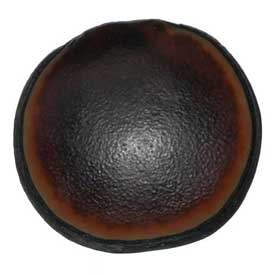
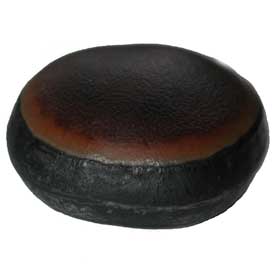
|
Moura, T. M., G.P. Lewis, V. F. Mansano and A. M. G. A. Tozzi. 2014. Taxonomic Studies in Mucuna Adans. (Legunminosae - Papilionoideae) from Peru. Systematic Botany 39(3):884-896. |
| Mucuna fawcettii, was named by Ignatius Urban in 1908, from specimens found in Jamaica. Presently, it is a bit of a dilemma to those interested in drift seeds. The problem: This species has been described as being endemic to Jamaica... i.e., it grows ONLY in Jamaica. Additionally, there are statements that it is probably extinct from Jamaica (see: Perry & Dennis, 2003:179)... i.e., it probably doesn't grow there any more. Hmmmm... IF it no longer exists at the ONLY place that it grew, then why do we keep finding these seeds washed ashore? Possibilities are that it isn't extinct from Jamaica, which keeps producing seeds from unknown locations. Alternatively, it is extinct from Jamaica but the last of the seeds from there established colonies of the plant elsewhere, which now produces seeds. Lastly, perhaps this plant was never endemic to Jamaica and it has been growing elsewhere all along, whether it is presently extinct from Jamaica or not. Could it possibly be that the original "source" of these seeds was (and still is) the upper Amazon River? Could seeds from the Amazon have been washed downstream to the ocean, floated, and subsequently colonized Jamaica? Did island life in Jamaica not provide the best habitat and climate for this species and thus it died out on the island? Hmmmm..... Nonetheless, these seeds are coveted by collectors, due to their large size (for Mucuna spp.), their rarity and their beauty, embellished by the presence of the overly thick black band (hilum) around much of the periphery of the seed. Data taken and averaged from 13 drifted and beach-stranded seeds depict that these seeds are roughly circular in shape, averaging about 33 mm in diameter and averaging 18.7 mm in thickness. The hilum averages 8.5 mm thick, comprising about half of the total thickness of the seed. Presently, I've acquired seeds that look exactly like those washed ashore in Florida (USA), but were collected as non-drifted seeds directly from the jungle along the Amazon River in Peru (see image of lots of seeds, below right). We're attempting to grow both the drifted seeds as well as those obtained from the Amazon region of Peru. Hopefully, the flowers will confirm the identity of each of these seeds, and distinguish it from other seeds. Another seed (but not a "sea-bean") that also has a thick hilum is Mucuna elliptica, for which we're also trying to obtain literature, seeds, pods, etc. for comparison. This species is regulated in Jamaica (assuming it is still there!). The following document, in Microsoft Word format, lists: “Species in Jamaica the trade of which is to be controlled to prevent or restrict exploitation and which require the cooperation of other Parties in the control of trade in such species” This species list includes Mucuna fawcettii. John Hammerton, 2008, also lists (Table 1, pg. 6) Mucuna fawcetii as being endemic to Jamaica, and references yellow flowers: Mucuna pruriens: weed, invasive, or multi-use crop for the Bahamas? |
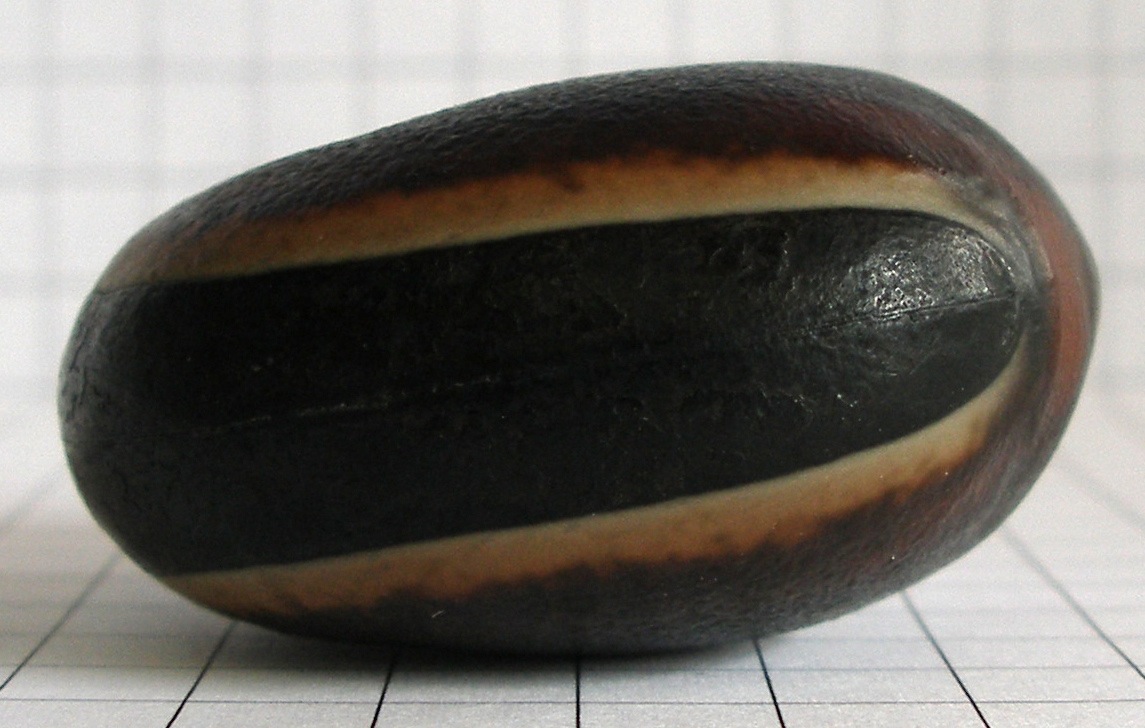 Side view of drifted (to Florida) specimen of Mucuna elliptica, showcasing the "thick band" called the hilum Photo: Nan Rhodes (www.BeachBeans.com) |
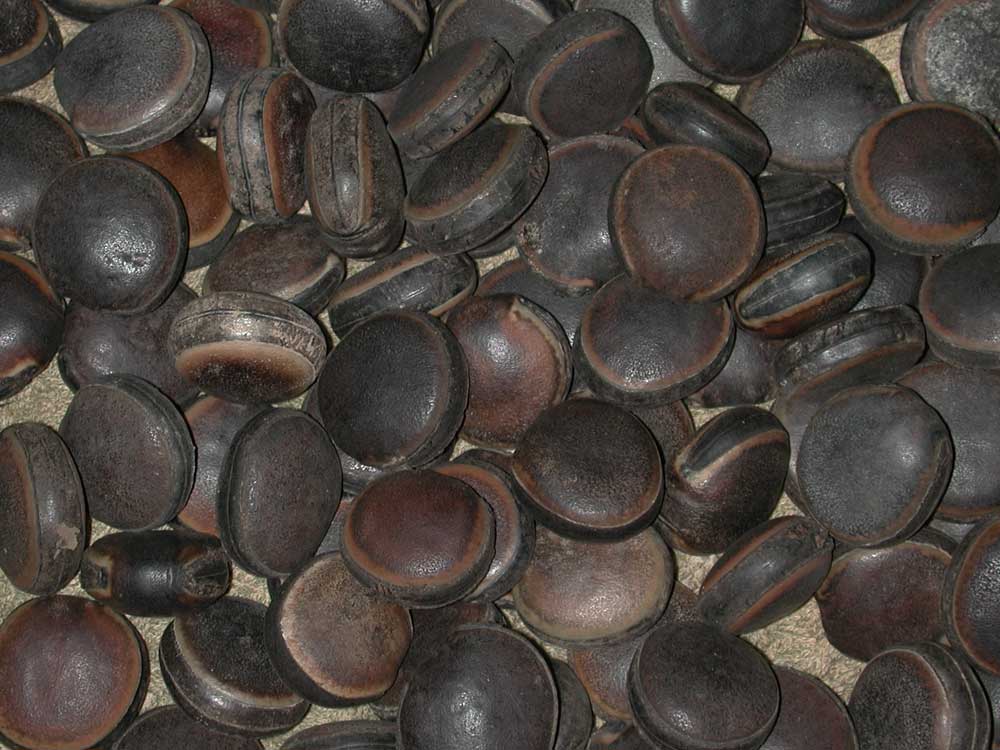 Jungle-collected specimens of Mucuna elliptica from the Amazon region of Peru. |
| This plant is from a seed taken from jungles of the Amazon region of Peru. | ||
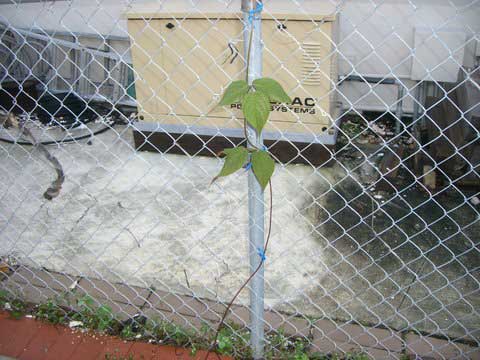 Young plant of Mucuna elliptica 7/21/2009 Photo: Gina Reed |
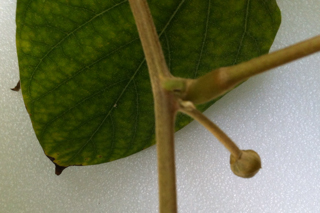 Young flower bud and partial leaflet of Mucuna elliptica 11/12/2011 Photo: Gina Reed |
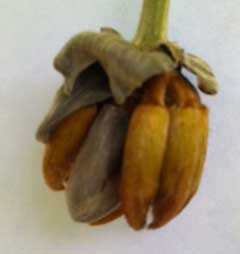 Mature buds of Mucuna elliptica Note presence of bracts at this stage! 11/28/2011 Photo: Gina Reed |
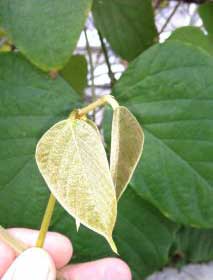 Immature leaves of Mucuna elliptica December 2011 Photo: Christopher Boykin |
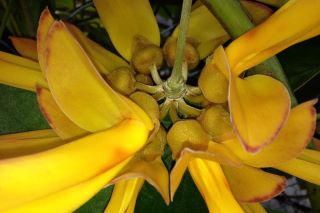 Ventral view of nearly mature flowers of Mucuna elliptica. Note that the bracts have fallen off at this stage. December 2011 Photo: Christopher Boykin Note the coloration of the base of the flowers, similar to the flower petals, along with the pinkish marginal coloration of the flowers. |
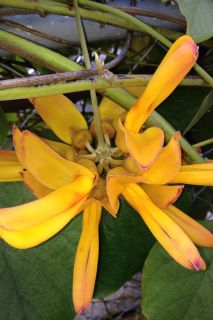 Ventral view of flower cluster of Mucuna elliptica. December 2011 Photo: Christopher Boykin |
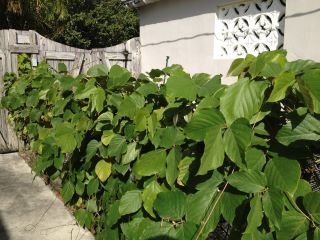 Mucuna elliptica covering a fence. December 2011 Photo: Christopher Boykin |
.jpg) Mucuna elliptica leaf (dorsal view) December 2011 Photo: Christopher Boykin |
.jpg) Mucuna elliptica leaf (ventral view) December 2011 Photo: Christopher Boykin |
||||||||||||
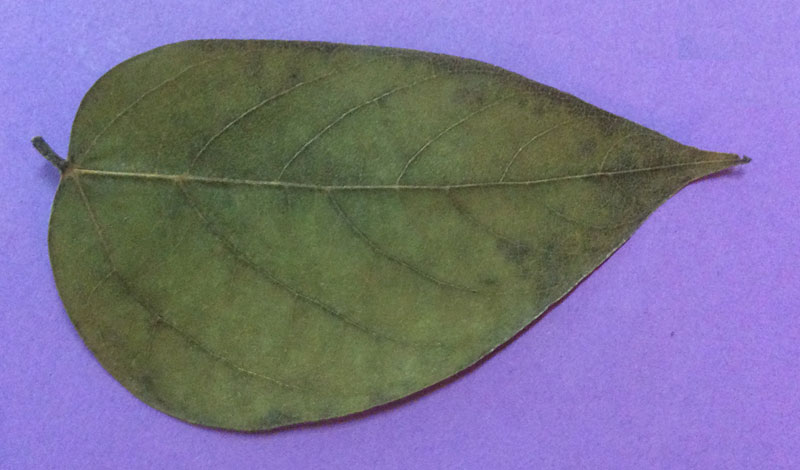 |
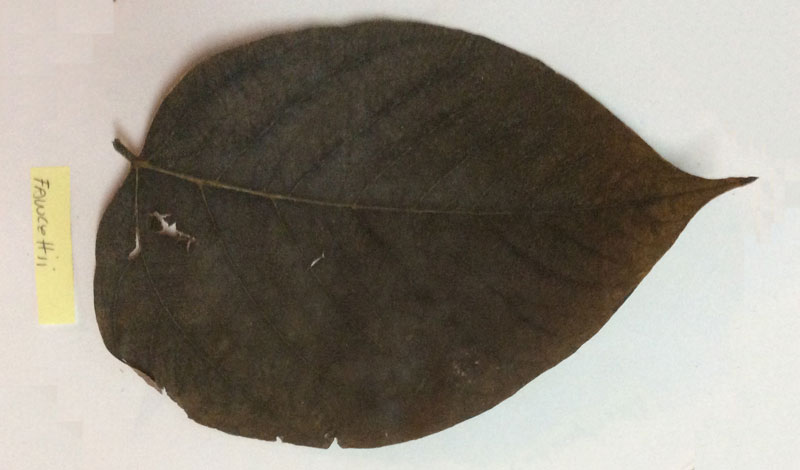 |
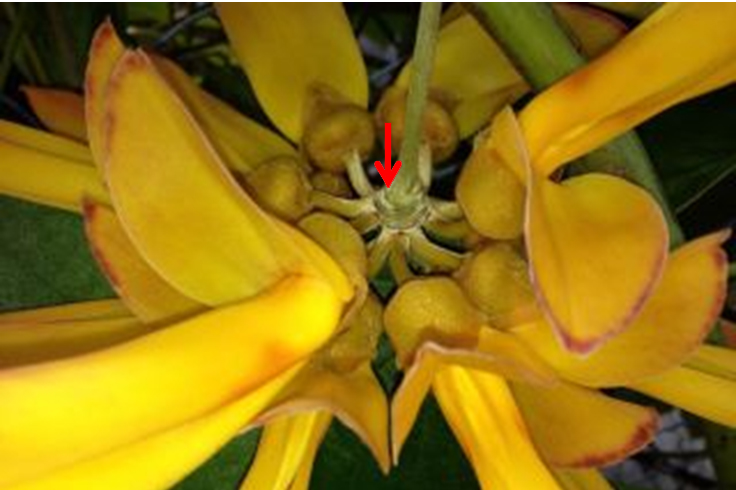 |
||||||||||||
Insufficient material to show either presence or absence of stipels. Gina examined the abaxial surface (underside) of the leaflets and determined: sparse hairs. For images of stipels and other leaflet terminology, click here. |
i.e., they are caducous (they fall off) | |||||||||||||
However, without the base of the leaflet's petiolule (where stipels may or may not be), I'm not sure what ID to place on this plant. Copmpare this situation with another plant, which has stipels and the bracts are not caducous (although the abaxial leaflet hairs are sparse). | ||||||||||||||
|
This descriptive text for M. fawcettii extracted (pg. 54) from: Flora of Jamaica, Containing Descriptions of the Flowering Plants Known from the Island. Vol. IV. Dicotyledons; Families Leguminosae to Callitrichaceae; by William Fawcett and Alfred Barton Rendle; 1920; 369 pp. 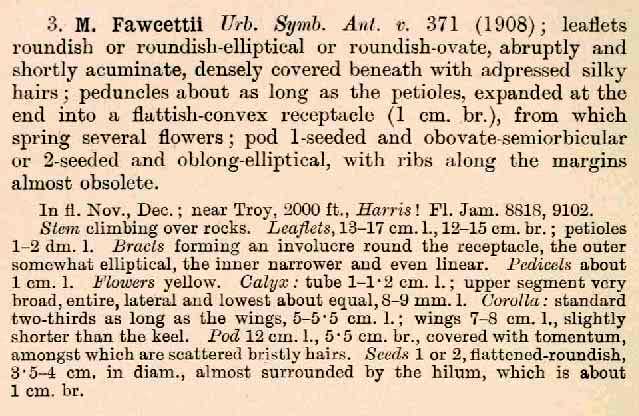 Online book provided by Internet Archive: www.Archive.org |
The following is the Original Description ("OD") of M. fawcettii by
Ignatius Urban in 1908;
Symbolae Antillanae,seu, Fundamenta florae Indiae Occidentalis. Symbolae Antillarum 5(3):1-555. The Original Description ("OD") of Mucuna fawcettii as a new species (n. sp.) is on pg. 371-372. 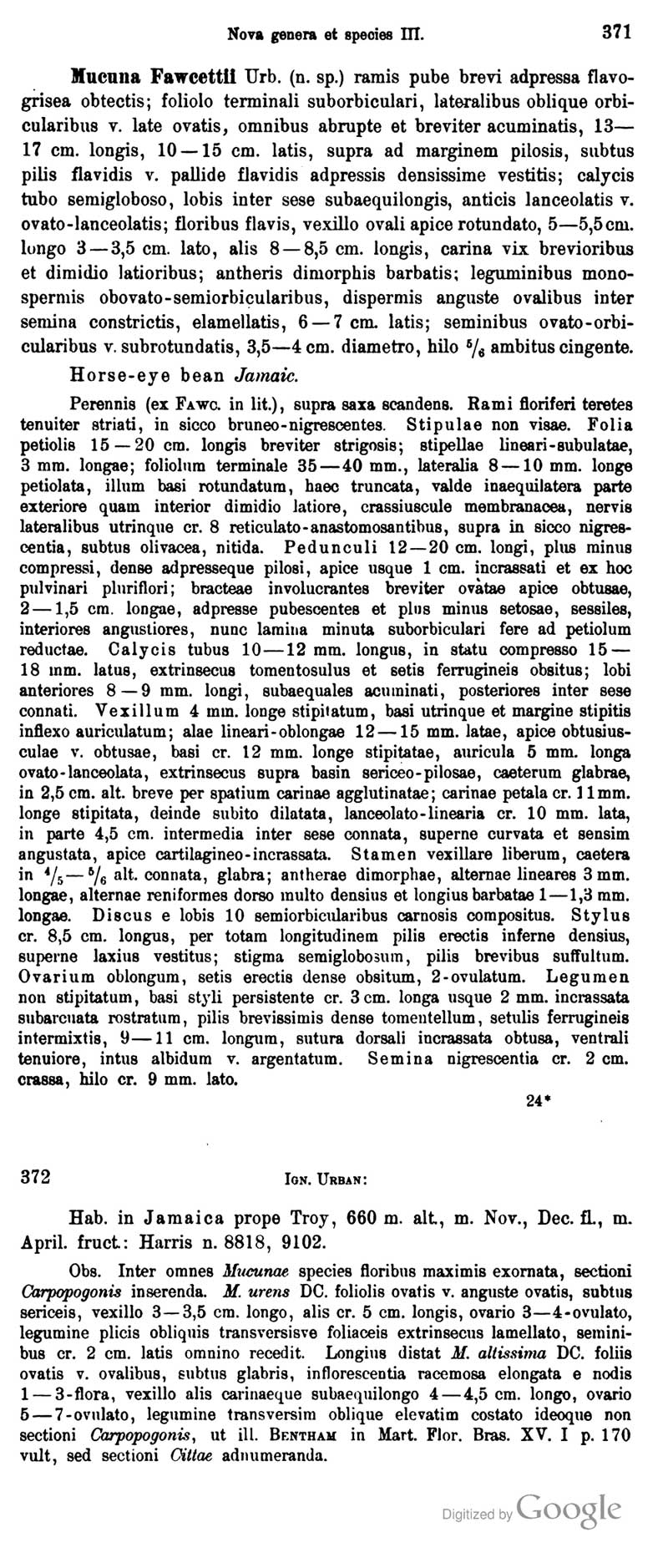 Online book provided by Missouri Botanical Garden and Google Books |
Links